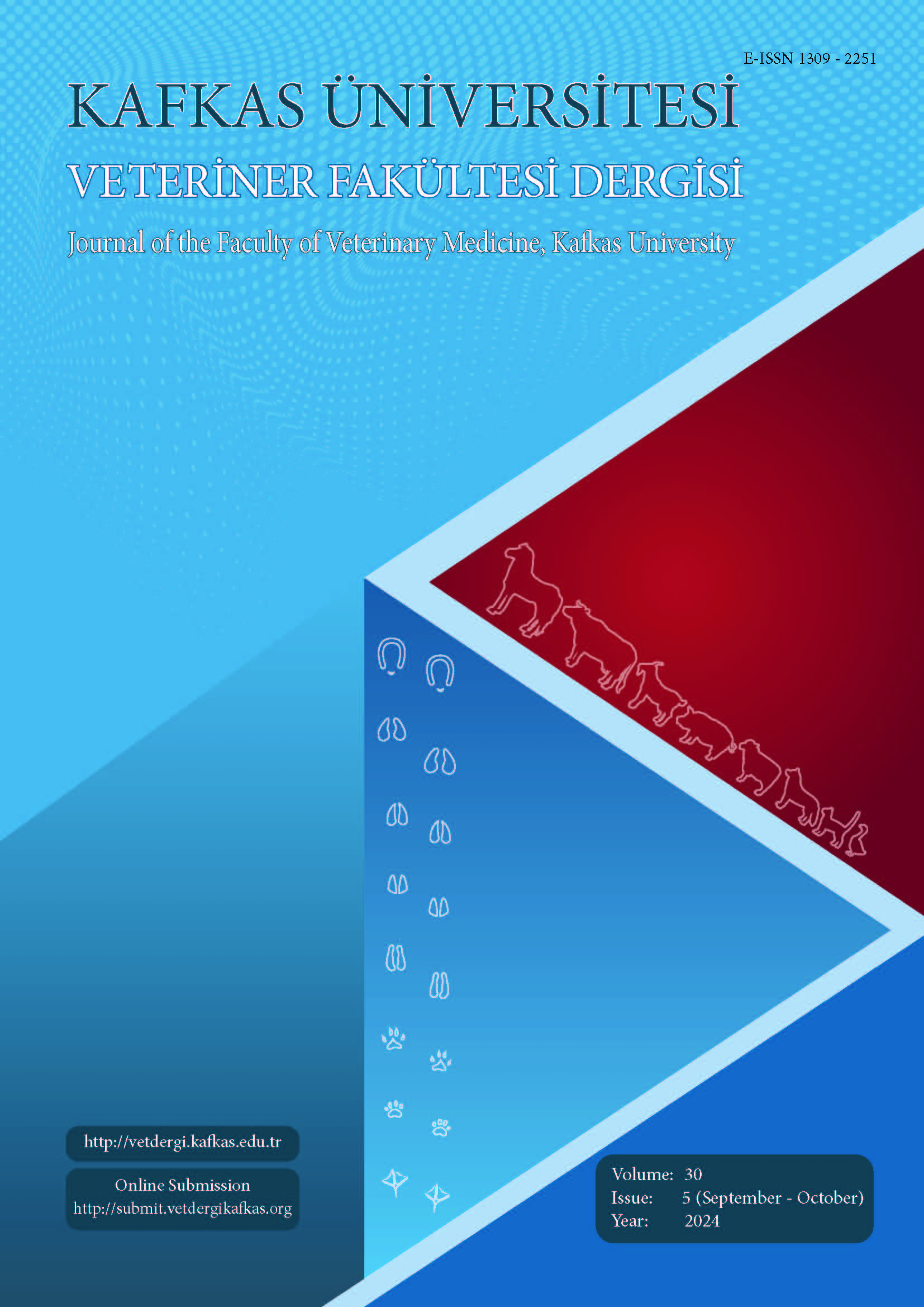
This journal is licensed under a Creative Commons Attribution-NonCommercial 4.0 International License
Kafkas Üniversitesi Veteriner Fakültesi Dergisi
2024 , Vol 30 , Issue 5
Impact of Vitamin E and Selenium Prior the Ovsynch Synchronization on Reproductive Performance in Friesian Dairy Cows During Hot Season
1Agricultural Research Center (ARC), Animal Production Research Institute (APRI), Department of Cattle Breeding Research, 12618, Dokki. Giza, EGYPT2Agricultural Research Center (ARC), Animal Production Research Institute (APRI), Department of Biotechnology Research, 12618, Dokki. Giza, EGYPT
3Agricultural Research Center (ARC), Animal Health Research Institute (AHRI), Department of Biochemistry, Toxicology and Feed Deficiency, 12618, Dokki, Giza, EGYPT DOI : 10.9775/kvfd.2024.31740 Heat stress during hot season enhances oxidative stress, alters hormonal secretion and adversely affects reproductive performance. So, it"s necessary to supply antioxidants such as vitamin E and selenium. This work aimed to investigate the impact of vitamin E and selenium administration on reproductive performance before ovsynch synchronization and artificial insemination (AI) in Friesian cows during hot season. Twenty ovsynch-synchronized Friesian cows were divided according to the time of vitamin E and selenium administration into four groups (each 5 cows), G1 control group without any administration, G2 administered pre-synchronization, G3 administered at AI, G4 administered two doses pre-synchronization and at AI. Follicular functions during synchronization period revealed a significant increase in both follicle number and diameter of G2 and G4 compared to G1 and G3. Blood samples were collected from all cows weekly from 0-day to 5th week post AI for hormones and antioxidant detection. Serum analysis results revealed increased progesterone, prolactin, CAT, SOD, GSH and total antioxidant capacity (TAC), while decreased cortisol and MDA of G4 compared to G1, G2, and G3. Pregnancy detection was performed at 60 days post-AI. Conception rates were 40, 60, 60, and 80% in G1, G2, G3 and G4, respectively. Therefore, vitamin E and selenium administration improve antioxidant activities and overcome oxidative stress providing a better impact on reproductive performance even in hot season. Keywords : Antioxidants, Conception rate, Heat stress, Hormones, Synchronization, Vitamin E and selenium










